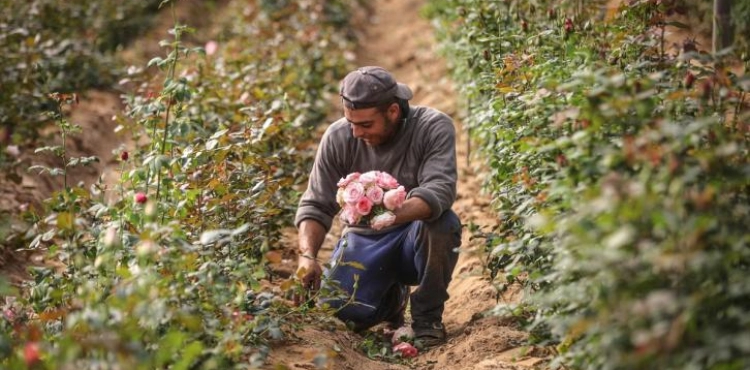Farmers in the Gaza Strip were forced to destroy flowers in their greenhouses in the Rafah Governorate, south of the Strip, as a result of the lack of turnout due to the Corona pandemic.
The interruption of life as a result of the precautionary measures imposed in the sector by the government agencies has caused a number of professions to be disrupted, including cultivating roses that citizens accept in seasons and happy occasions.
Some farmers tried to save as many flowers as possible, for sale, especially as wedding halls, halls, and meetings were suspended.
The area planted with flowers ranges from 1,200 dunums to 180 dunums, mostly in the Rafah Governorate, in the south of the Strip. And costing the cultivation of a single dunum of flowers, which is locally considered a luxury requirement - according to the statistics available to farmers and specialists - about eight thousand dollars, and the number remains a candidate for increase in the event of agricultural land exposure to epidemics, or weather conditions that are not suitable for seedlings. And each dunum of flowers per day needs 3-5 cups of water.
Despite the high costs incurred by flower growers, this sector remains one of the important agricultural productive sectors in the Gaza Strip, as it contributes about 25 million dollars annually in national income.
The number of workers working in the flower sector is 4,500, either directly or indirectly.
The flower export season extends between 11 / 11-25 / 4, during which all sector production is exported to Western European countries, namely the Netherlands, and then to other European markets.
The Gaza Strip exported 60 million flowers annually to Europe; however, in 2012, farmers managed to export only five million flowers due to the frequent Israeli closures and obstacles to the crossings.
It takes 11 months to grow and harvest flowers, so they start in June, and crop care continues until the beginning of December, when harvest, which in turn continues until May.
More than 100 varieties of flowers are grown in the Gaza Strip, but the pink is the flower preferred by the Gazan farmer in his land, to withstand the fluctuating weather factors.












